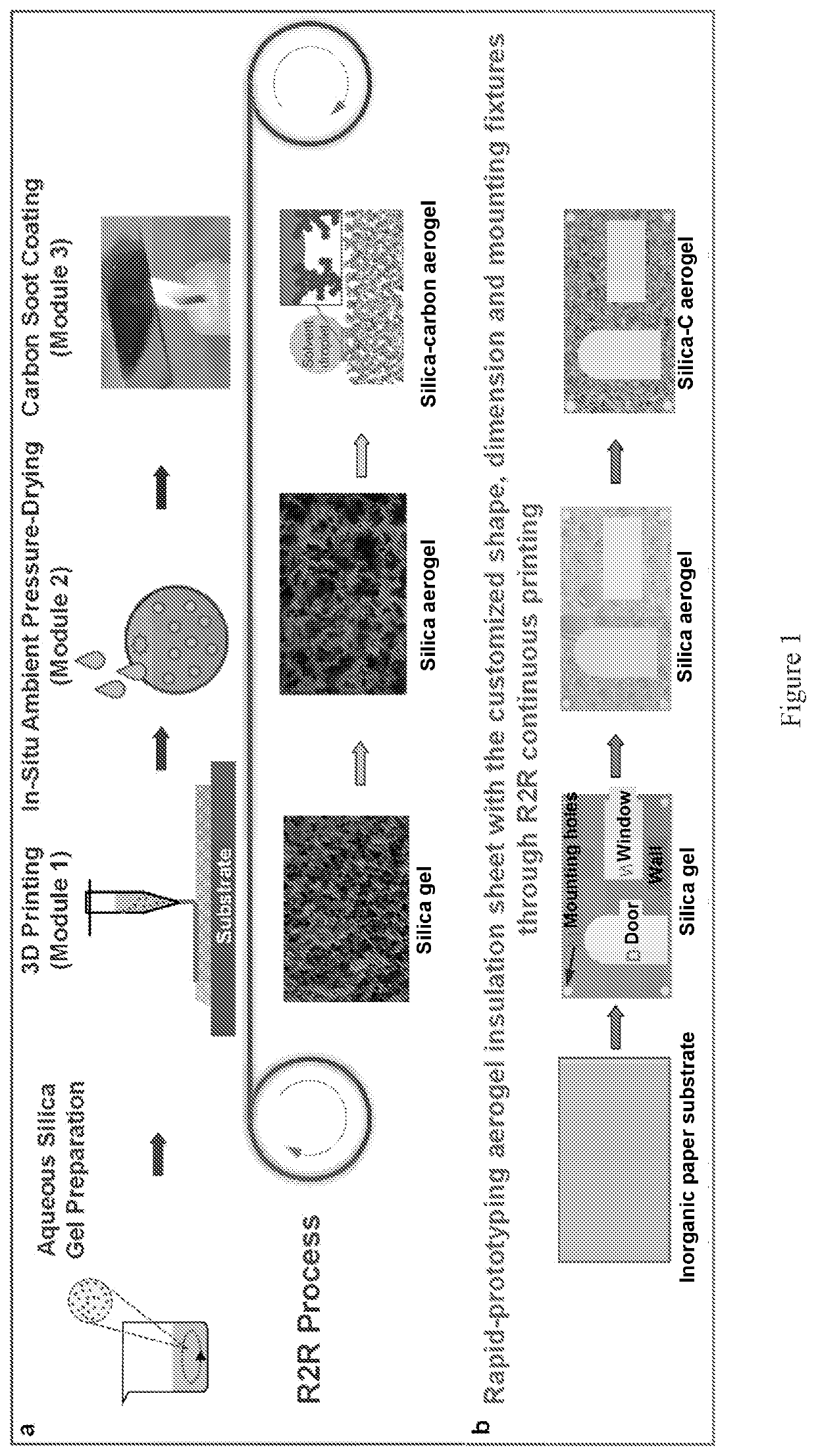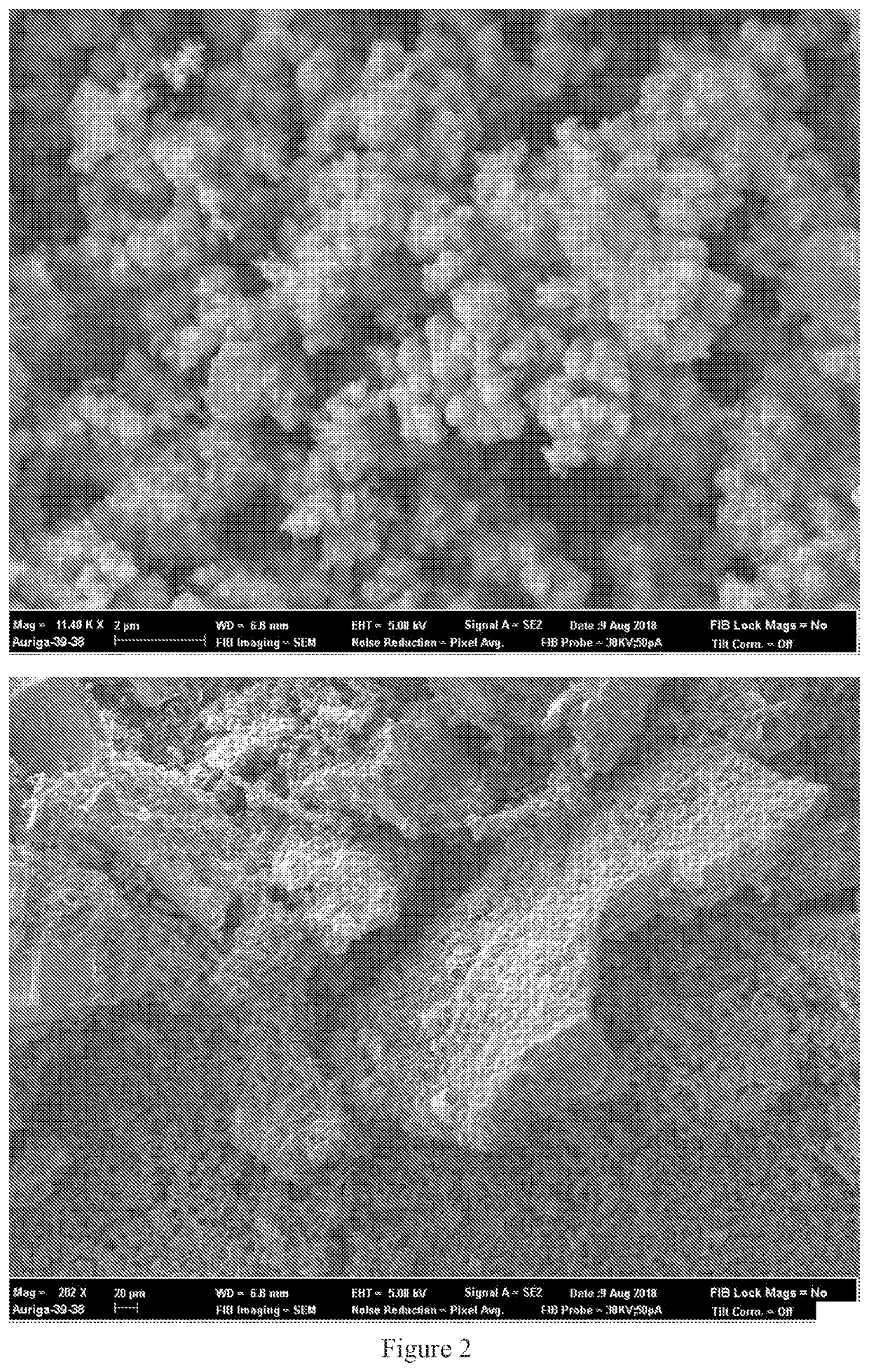Ceramic foams, methods of making same, and uses thereof
a technology of ceramic foam and foaming shell, which is applied in the field of ceramic foam, can solve the problems of reducing living space, occupying more space, and low thermal conductivity, and achieves the effects of robust mechanical and thermal stability, robust soundproof and fire-proof performance, and low cost manufacturing of pgaeros
- Summary
- Abstract
- Description
- Claims
- Application Information
AI Technical Summary
Benefits of technology
Problems solved by technology
Method used
Image
Examples
example 1
[0118]This example provides a description of making silica aerogel materials of the present disclosure and characterization of same.
[0119]1 g sodium bicarbonate was mixed with 7.08 ml DI water. Added in 4.59 ml Tetraethyl orthosilicate (TEOS) and 22.34 ml pure ethanol. 1 ml catalyst was also added to speed up the gel formation. The catalyst is a mixture of 1.457 ml ammonium hydroxide (28%), 0.1 g ammonium fluoride and 4.35 ml DI water. After 3 min (min=minute(s)), the gel was washed by DI water and then add in 500 ml pure ethanol soaking and stirring for 24 h (h=hour(s)). After soaking, the ethanol was removed. Then 10 ml TMCS (98%) was dropped into the solution. Pure ethanol was also added. CO2 coming out was observed continuously for next 24 h. At last, the gel was dried in 60° C. ambient environment with ethanol for 24 h to get aerogel product.
example 2
[0120]This example provides a description of making silica aerogel materials of the present disclosure and characterization of same.
[0121]3.3 g of cetyl trimethylammonium bromide (CTAB) and 33.3 g of urea were dissolved in acetic acid aqueous solution (1 mM, 100 mL) following by 20 min stirring. Then, 56.7 mL of Tetraethyl orthosilicate (TEOS) was added. The solution was stirred vigorously for 30 min to form a uniform bubble emulsion which was sealed and then transferred into a preheated oven at 60° C. for 2-day reaction. The as-prepared aerogel was washed by water and dried at room temperature. The resulting aerogel has a light density (around 0.15 g / cm3) and good thermal insulation.
example 3
[0122]This example provides a description of silica aerogel materials of the present disclosure and characterization of same.
[0123]The sample was prepared by running the reaction with a substrate (Unifrax paper) in contact with the reaction mixture. This can be referred to an in-situ infiltration. SEM; energy dispersive x-ray spectroscopy (EDX); and thermal imaging were obtained (FIGS. 2-6).
PUM
| Property | Measurement | Unit |
|---|---|---|
| pressure | aaaaa | aaaaa |
| temperature | aaaaa | aaaaa |
| size | aaaaa | aaaaa |
Abstract
Description
Claims
Application Information
 Login to View More
Login to View More - R&D
- Intellectual Property
- Life Sciences
- Materials
- Tech Scout
- Unparalleled Data Quality
- Higher Quality Content
- 60% Fewer Hallucinations
Browse by: Latest US Patents, China's latest patents, Technical Efficacy Thesaurus, Application Domain, Technology Topic, Popular Technical Reports.
© 2025 PatSnap. All rights reserved.Legal|Privacy policy|Modern Slavery Act Transparency Statement|Sitemap|About US| Contact US: help@patsnap.com



